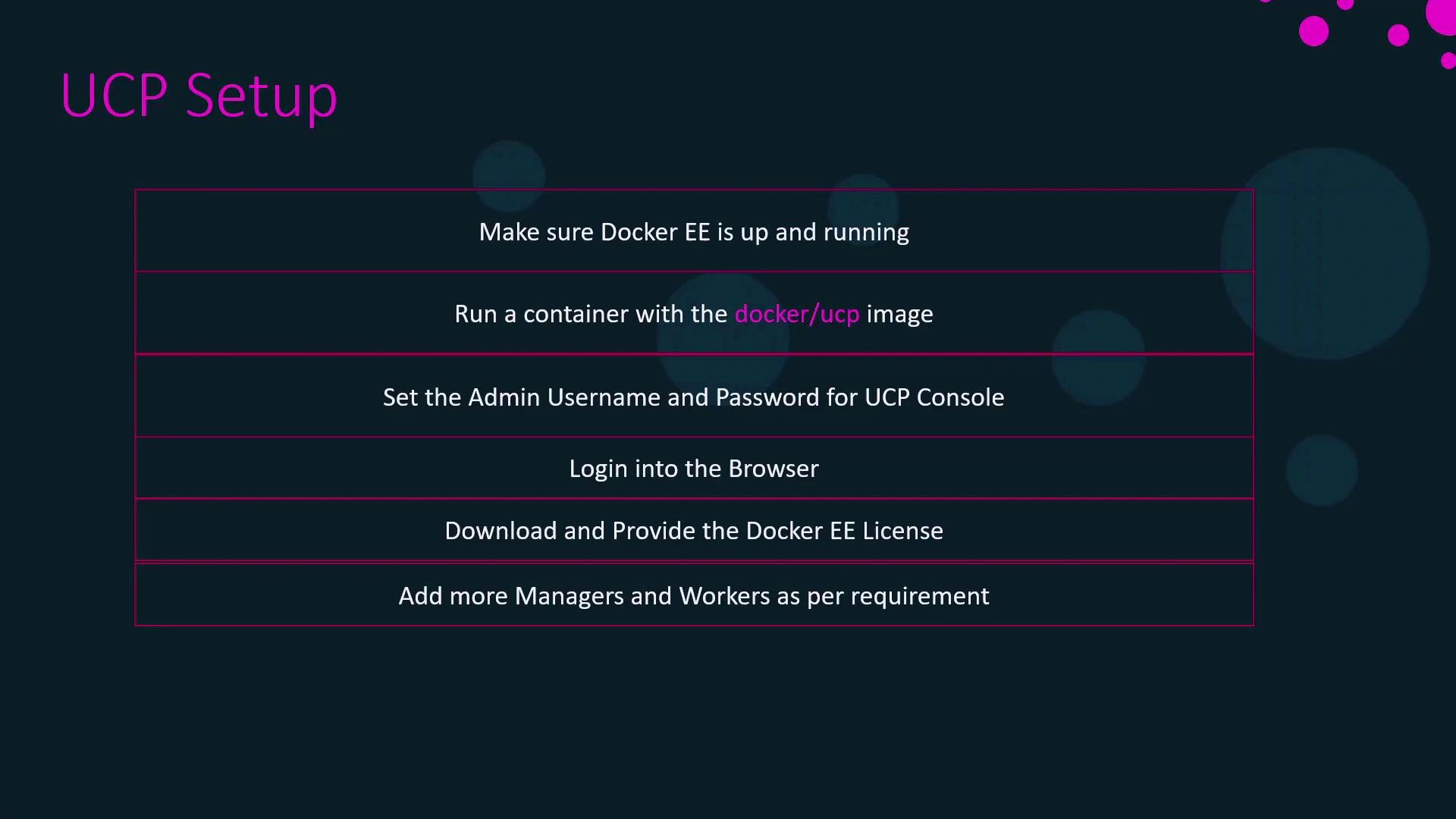Docker Certified Associate Exam Course
Docker Engine Enterprise
Universal Control Plane Setup
In this lesson, we’ll dive into Docker’s Universal Control Plane (UCP), an enterprise-grade solution for cluster management. You’ll learn about its architecture, core components, and a step-by-step installation guide.
What Is Universal Control Plane?
The Universal Control Plane (UCP) provides a unified management portal—via a web UI or Docker CLI—to monitor and control your Docker Swarm clusters. UCP is designed for production environments, offering:
| Feature | Description |
|---|---|
| LDAP & Active Directory support | Centralized authentication and directory integration |
| Role-Based Access Control (RBAC) | Fine-grained permissions for users and teams |
| Multi-Platform Workers | Manage Linux and Windows worker nodes (Linux only for manager nodes) |
| Web UI & CLI Management | Flexible control through a graphical interface or Docker commands |
Note
UCP runs on Docker Swarm under the hood, extending it with enterprise security, monitoring, and governance features.
UCP Architecture Overview
UCP deploys a global service called the UCP agent on every node—manager or worker. This agent orchestrates the following core components as containers:
- Web UI: Central dashboard for cluster health and resource usage
- Authentication API: Handles login, LDAP/AD integration, and token issuance
- Metrics Server: Collects and displays performance data
- Proxy: Routes API requests and enforces security policies
- Data Stores: Persist configuration, state, and audit logs
On worker nodes, the UCP agent also spins up a dedicated ucp-proxy that mediates all Docker API calls, ensuring only authorized users and services can execute commands.
In addition, UCP provisions essential Kubernetes binaries—like kube-controller-manager and kubelet—to enable optional Kubernetes orchestration alongside Docker Swarm. For a complete breakdown, see the UCP architecture documentation.
| Service Type | Role |
|---|---|
| Global (UCP Agent) | Runs one container on each node |
| Replica | Scales specified containers across the cluster |
| Worker Proxy | Secures and filters Docker API calls on workers |

Installing Universal Control Plane
Follow these steps to deploy UCP on your Docker Enterprise Engine:
- Verify Prerequisites
- Docker Enterprise Engine installed and running
- Network connectivity between nodes
- Pull the UCP Installer
docker pull docker/ucp:<version> - Run the Installer Container
docker run --rm -it \ --name ucp-install \ -v /var/run/docker.sock:/var/run/docker.sock \ docker/ucp:<version> install \ --host-address <MANAGER-IP> \ --admin-username admin \ --admin-password <strong-password> - Access the UCP Web UI
Navigate tohttps://<MANAGER-IP>:8443in your browser. - Upload Docker License
When prompted, upload your Docker Enterprise license file to activate UCP. - Join Additional Nodes
Use the “Add Node” option in the UCP console to onboard more managers or workers.
Warning
Keep your admin-password secure and rotate it periodically. Avoid using weak or reused passwords.

A hands-on demonstration will follow, illustrating these installation steps and best practices for scaling your UCP-managed cluster.
Watch Video
Watch video content